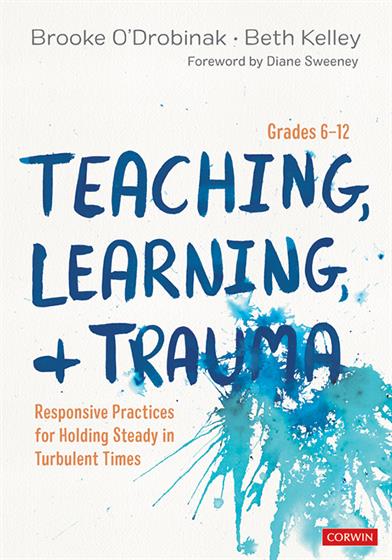Foreword by Diane Sweeney
Preface
Acknowledgments
About the Authors
Introduction
The Intersection of Teaching, Learning, and Mental Health
The Integrated Approach: Using the Five Lenses
Intended Audience and Outcome
Organizational Features of This Book
Why This Book, and Why Now?
Essential Background Knowledge: ACEs
The Impact of ACEs on Learning
Chapter 1. In Their Natural Habitat: Understanding and Teaching Adolescent Learners With Chronic Stress and Trauma
Understanding Adolescent Learners With Chronic Stress and Trauma: Why Is It Important?
Student Experience
Adult Experience
Foundation for Effective Practice #1: Adolescent Development—My Brain Made Me Do It
Foundation for Effective Practice #2: Identity Formation—Who Am I?
Foundation for Effective Practice #3: Risk-Taking and Psychological Safety
What Works in the Classroom: Adolescent-Centered Teaching and Learning
Taking Understanding School-Wide
Chapter 2. Self-Regulation Is the Key to Calm
Self-Regulation: Why Is It Important?
Student Experience
Adult Experience
Foundation for Effective Practice #1: Understanding the Body’s Reaction to Stress and Dysregulation
Foundation for Effective Practice #2: Strategies for Regulating
Foundation for Effective Practice #3: Don’t Take It Personally
What Works in the Classroom: Cultivating Self-Regulation
Taking Self-Regulation School-Wide
Chapter 3. Self-Care: Check Yourself Before You Wreck Yourself
Self-Care: Why Is It Important?
Student Experience
Adult Experience
Foundation for Effective Practice #1: Avoiding Burnout
Foundation for Effective Practice #2: Recognizing Vicarious Trauma
Foundation for Effective Practice #3: Navigating Mixed Messages and Cultural Norms
What Works in the Classroom: Translating Self-Care Into Teaching and Learning Practices
Taking Self-Care School-Wide
Chapter 4. Know Me to Teach Me
Knowing Students Well: Why Is It Important?
Student Experience
Adult Experience
Foundation for Effective Practice #1: Listen
Foundation for Effective Practice #2: Provide Choices
Foundation for Effective Practice #3: Trust Their Wisdom
What Works in the Classroom: Knowing Students Well
Taking Knowing Others School-Wide
Chapter 5. Healthy Relationships in Complicated Times
Healthy Relationships: Why Are They Important?
Student Experience
Adult Experience
Foundation for Effective Practice #1: Defining Boundaries
Foundation for Effective Practice #2: Creating Awareness
Foundation for Effective Practice #3: Setting Limits
Foundation for Effective Practice #4: Accepting Personal Responsibility
What Works in the Classroom: Cultivating Healthy Relationships
Taking Healthy Relationships School-Wide
Chapter 6. Conflict Resolution: What to Do When Things Fall Apart
Conflict Resolution: Why Is It Important?
Student Experience
Adult Experience
Foundation for Effective Practice #1: Punishment Doesn’t Work
Foundation for Effective Practice #2: Ownership, Accountability, and Empathy Matter
Foundation for Effective Practice #3: Clear Communication Is the Ticket
Foundation for Effective Practice #4: Assume Good Intentions
Foundation for Effective Practice #5: Preparation Is Key
What Works in the Classroom: Accommodating Conflict
Taking Conflict Resolution School-Wide
Chapter 7. Integrating It All
Integrating Practices in Teaching, Learning, and Mental Health: Why Is It Important?
Student Experience
Adult Experience
What Works in the Classroom: Teaching and Learning With Trauma in Mind
Foundation for the Integrated Learning Model #1: Social Capital
Foundation for the Integrated Learning Model #2: Self-Efficacy
Foundation for the Integrated Learning Model #3: Locus of Control
Taking the Integrated Model School-Wide
References
Index



